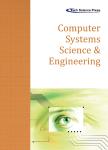Detection Algorithm of Surface Defect Word on Printed Circuit Board
作者机构:School of Computer EngineeringJiangsu University of TechnologyChangzhou213001China
出 版 物:《Computer Systems Science & Engineering》 (计算机系统科学与工程(英文))
年 卷 期:2023年第46卷第9期
页 面:3911-3923页
学科分类:08[工学] 0835[工学-软件工程] 081202[工学-计算机软件与理论] 0812[工学-计算机科学与技术(可授工学、理学学位)]
基 金:This work was funded by the Natural Science Research Project of Higher Education Institutions in Jiangsu Province(No.20KJA520007) Min Zhang receives the grant and the URLs to sponsors’websites are http://jyt.jiangsu.gov.cn/
主 题:Printed circuit board defect detection small target
摘 要:For Printed Circuit Board(PCB)surface defect detection,traditional detection methods mostly focus on template matching-based reference method and manual detections,which have the disadvantages of low defect detection efficiency,large errors in defect identification and localization,and low versatility of *** order to furthermeet the requirements of high detection accuracy,real-time and interactivity required by the PCB industry in actual production *** the current work,we improve the Youonly-look-once(YOLOv4)defect detection method to train and detect six types of PCB small target ***,the original Cross Stage Partial Darknet53(CSPDarknet53)backbone network is preserved for PCB defect feature information extraction,and secondly,the original multi-layer cascade fusion method is changed to a single-layer feature layer structure to greatly avoid the problem of uneven distribution of priori anchor boxes size in PCB defect detection ***,the K-means++clustering method is used to accurately cluster the anchor boxes to obtain the required size requirements for the defect detection,which further improves the recognition and localization of small PCB ***,the improved YOLOv4 defect detection model is compared and analyzed on PCB dataset with multi-class *** experimental results show that the average detection accuracy value of the improved defect detection model reaches 99.34%,which has better detection capability,lower leakage rate and false detection rate for PCB defects in comparison with similar defect detection algorithms.



